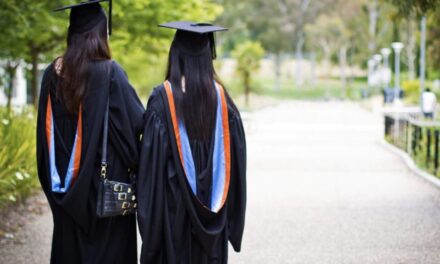In a recent article in The Pie News, Professor Simon Marginson, director of the United Kingdom’s Centre for Global Higher Education, predicted it could take a decade for international recruitment of students in Australia to recover from the effects of COVID-19.
Being based in the Asia Pacific Region and with Asia already bouncing back from the economic impact of the global pandemic in advance of Western economies, we must consider an alternative scenario. My own view is that Australia has all the makings to be the comeback kid of the early 2020s in student mobility.
History suggests Australia knows what it takes to recover from setbacks. It’s only eight years since international student enrolments in Australian higher education fell to 230,343 after two years of decline. Over five years, the numbers had risen 51% to 349,123. Proof that the kangaroos can bounce fast and high.
Marginson acknowledges Australia “will recover because it has many advantages and a very well-organised industry, but it will recover more slowly in terms of absolute numbers. I would think you’re probably looking at a five- to 10-year period before Australia will go back to the half a million students coming in every year.”
His argument seems to be based on a view that Australia is “not quite as prestigious as the US and the UK in terms of the English-language countries.”
One issue with this analysis is that it ignores the reality that the biggest international recruitment success story of the past five years has been Canada. There is little to support the notion that ‘prestigious’ universities are driving that phenomenon. In a straightforward comparison of the THE World University Rankings, we see Australia with six top 100 universities when Canada has five but, for strength in depth, Australia has 22 in the top 300 compared with Canada’s 14.
Most international students know that they will not get into Harvard or Yale or Oxford or Cambridge. What they are travelling to achieve is an international experience in a country that welcomes them, that offers value for money and which gives them a good starting point for a career. It may once have been true that students from China were making choices based wholly on university rankings, but all the evidence is that growth markets are willing to decide on other factors and the smarter countries have recognised this.
Time after time, we have seen research from the British Council, INTO University Partnerships, IDP, QS and Unibuddy, to name just a handful, showing that international students are particularly focused on the prospects of building their careers on the basis of their university choice. Australia has been innovative in developing its post-study work opportunities and there is little doubt that it can go further. But, equally, there is every sign that the country’s graduates who return to their home countries are getting jobs at a rate that is comparable to the UK.
Employability rates
Asia Careers Group research shows that, while employability rates in more established markets (China, India, Malaysia, Hong Kong and Singapore) are slightly higher for UK institutions, employability rates after an Australian degree are higher in emerging Association of Southeast Asian Nations (ASEAN) markets.
There are several other factors that favour a quick rebound for the Australian Higher Education sector:
• Collaboration – Australian Universities are fiercely competitive, but tend to work more collaboratively than their UK and US counterparts.
• Lobbying – Effective lobbying and visibility, particularly from the Group of Eight institutions spearheaded by Vicki Lewis, ensuring that throughout the crisis their voices are being heard.
• Investment in Emerging Markets – while the UK and US have been focusing recruitment on established overseas markets, Australian universities have been more adventurous. With a market leading position in both ASEAN countries and South Asia, they are already eyeing these regions for the expansion of their transnational provision – Central Queensland University (CQU) and Monash’s recent campus development in Indonesia is a good example.
• Proximity to Asia – Asia drives international student mobility and students and their parents feel Australia has handled the pandemic more adeptly than either the UK or US. There is every possibility that Asian parents will want their children close by in the advent of a future pandemic.
• Can-do attitude – more important than all of these is the open, transparent can do-attitude of those in the sector. They are willing to embrace new ideas and strategies to propel them forward in what is undoubtedly a challenging market.
There is already light at the end of the tunnel. Just this week a senior state government minister, Stuart Ayres, the minister for jobs, investment, tourism and Western Sydney, said New South Wales is aiming to welcome international students by early 2021. He noted that New South Wales’s record of quarantining 60,000 returning travellers through Sydney had built a “strong bed of evidence that we can learn from” in managing overseas student arrivals.
The higher education sector can and must reinvent itself during and post-COVID, but nobody will escape some of the consequences of the pandemic.
Significant loss of international student fee income is the inevitable consequence of borders being closed, but that is pain that the US is certainly suffering and the UK’s decision to open universities looks increasingly cavalier with more student lockdowns reported weekly.
While Australian international student recruitment is still overly dependent on Chinese in-bound students, that is an accusation that can equally be levelled at the US and UK. However, Australia is ahead of its competitors in exploring new markets and has the appetite to continue its development of opportunities.
By contrast, some universities in the UK seem more desperate to hang on to EU students at cut price, which betrays a lack of confidence at being able to build their enrolments globally at full price.
The only real barrier to Australia being able to recover more quickly than other countries will be its ability to prove the return on investment for students choosing to remain in Australia for post-study work and, more importantly, for those returning home. In the economic conditions facing all graduating students, their employability will be the key to building a country’s reputation as the best choice for study.
“It’s the economy, stupid” is a quote attributed to James Carville, a strategist in Bill Clinton’s successful 1992 presidential campaign. This was the same year Clinton described himself as “the comeback kid” after his recovery in the Democratic primaries. Both could be true for Australia in 2021, and writing the country off for the short term is potentially catastrophic if you are a competitor.
By Louise Nicol
This content was found at https://www.universityworldnews.com/post.php?story=20201015063720762
Read more other articles in the same category here.






Recent Comments